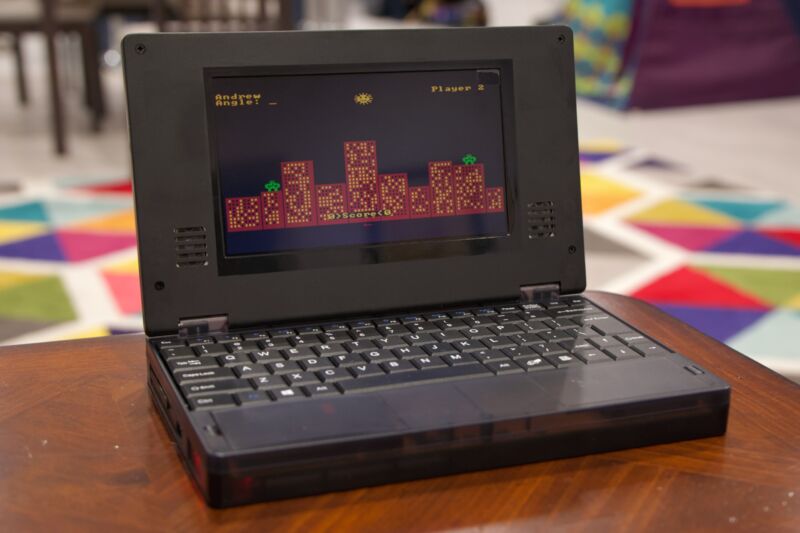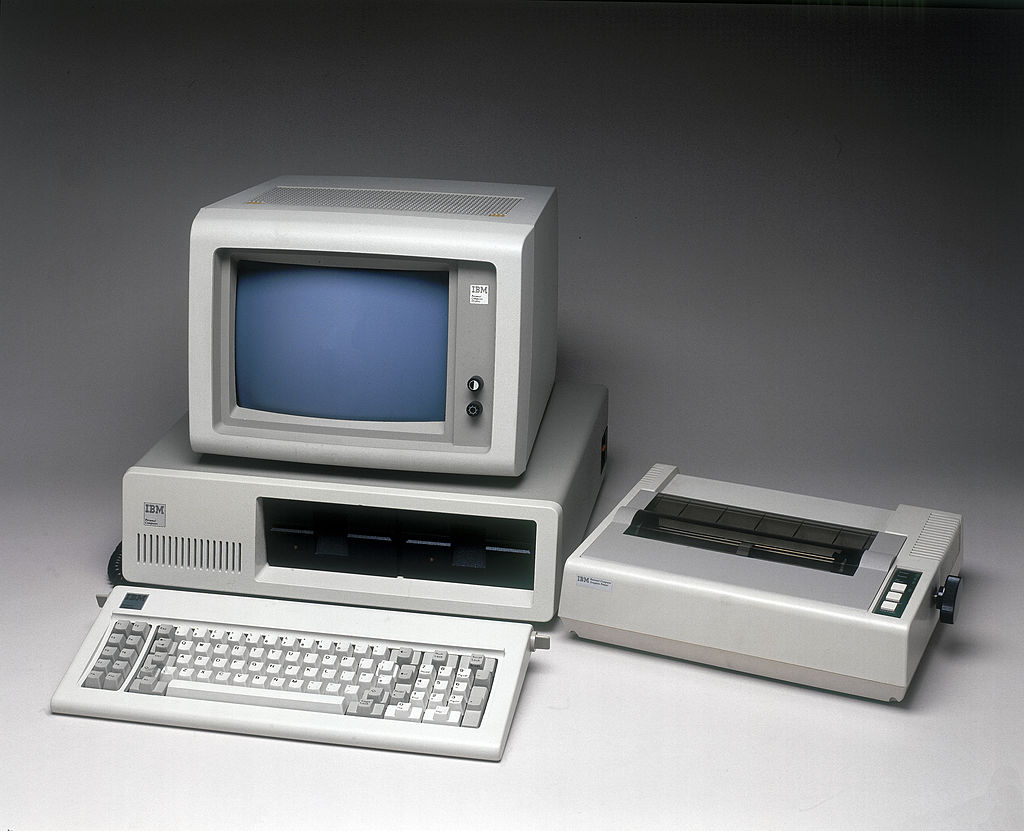
Andrew Cunningham
The words you read are time travelers.
Technically written on a brand new laptop that was recently released. But everything from the word processor on which this text was written to the CPU that ran it was decades old.
I’m writing this in book 8088, which is an absolutely freaking $200. Imported system It uses a processor from 1984, a custom motherboard design, and a cobbled-together set of components to approximate its specifications. The original IBM PC 5150 from 1981. It runs at 4.77 MHz, at least when it’s not Turbo mode, and it has a generous helping of 640KB (yes, kilobytes) of system memory. (If you can’t afford one right now, keep an eye on the listing because it’s been out of stock a few times in the last few weeks).
It’s a weird computer, even by the standards of every other weird computer I’ve gotten my hands on. Its keyboard is clunky, it comes with pirated BIOS and pirated software, and everything is always slow, slow, slow. Its speakers immediately crackle unhappily at me for no apparent reason. Its small, low-resolution LCD screen is hopelessly dim.
Technical support is provided by an AliExpress seller in China, and both sides rely on automatic translation to bridge the language gap. And I need a little tech support because the system doesn’t work as promised, and the working hardware is often not optimally configured.
Still! The book 8088 is an interesting technical achievement, a true IBM PC compatible that has a lot in common with my first ancient, terrible personal computer. I’m not sure it’s a good buy, even for retro-tech die-hards who eat and breathe this sort of thing. But that doesn’t mean it isn’t a ton of fun to explore.
In this article, we’ll take a closer look at the Book 8088’s hardware, its historical roots, and what it was like to run it. In part two, we’ll take a deep dive into ancient and modern software to explore what you can do with this type of machine in 2023.
Intel’s 8088 and the rise of the “IBM-compatible”.
Intel’s first x86 processor was the 8086, released in mid-1978. It was the company’s first 16-bit processor at a time when most were still 8-bit, and it could run assembly code written for Intel’s earlier 8008, 8080, and 8085 chips. But this same relatively forward-looking design made it too expensive to use, so it didn’t become the chip that would help the x86 architecture take over the computing world.
That honor went to 1979’s 8088, a cut-down version of the 8086 that could run the same code and was an internally 16-bit chip, but it used an 8-bit external data bus. Halving the speed at which the CPU can communicate with the rest of the computer hurts performance, but manufacturers can continue to use parts made for older, cheaper 8-bit computer designs.

IBM PC 5150.
SSPL/Getty Images
IBM is one of them.
The original x86 PC was a project changed within a year by a small team at IBM, and the decision to use an “open” architecture (not in the modern “open-source” sense, but a “modular, non-proprietary “sense” that any other company could build) with expansion slots. The hardware was somewhat redundant: it shipped with an 8088, a 5.25-inch drive for 360KB 5.25-inch floppy disks, no hard drive, and 16KB of RAM. Original press release calls them “characters of memory” and counts them in bytes; The MacBook Air I’m editing this on has 17,179,869,184 characters of memory.
The IBM PC was a huge success, and the market for “clones” to run its applications and emulate its architecture rose, thanks to its hardware components and reverse-engineered versions of IBM’s proprietary BIOS. Clone-makers often undercut IBM’s prices, and they eventually began to improve hardware faster than IBM did (I read The book, titled by former Compaq CEO Rod Canyon, open, which is bone dry but an interesting first-hand account). Microsoft stopped collaborating with IBM, largely abandoning IBM’s OS/2 program to pursue its own Windows business, selling software that could run on IBM computers and clones. By the time Windows 3.1 was released in 1992, the outlines of the computer we know today were clearly visible. And all modern Intel and AMD PCs retain some degree of compatibility with the original 8088.
The Book 8088 is a modern take on an IBM-compatible PC, although it is a direct successor to the IBM PC XT, which was mostly a 5150 with a hard drive.
The design of the IBM PC is so simple that retro-tech enthusiasts have successfully developed modern open-source versions of its hardware and BIOS. A very remarkable work has been done Sergey KiselevWho cares Open source BIOS And some open source designs Motherboards And ISA expansion cards; The new chips made it possible to shrink the IBM 5150, its various expansion cards, and even two new features onto a board smaller enough to fit into the Book 8088’s small, chunky frame. Book 8088 benefits from all this work, however; At the very least, its creators are violating the GPL license by modifying Kiselev’s BIOS to remove his name from it (we confirmed this by looking at the BIOS files sent by the seller).
“Even though my work is open source, I don’t mind people using it in their projects, I care deeply about the principles of open source software development and licensing,” Kiselev wrote to Ars. “The manufacturer of this machine is in flagrant violation of copyright laws and licenses.”
The Book 8088 ships with MS-DOS 6.22 and Windows 3.0, among other software; At this point, all these materials are broadly classified as “Abandoned roles“And available for free WinWorldPC And other sites that aren’t anti-Microsoft, but allowing old software for historical and archival purposes isn’t the same as inviting people to sell it on new hardware.